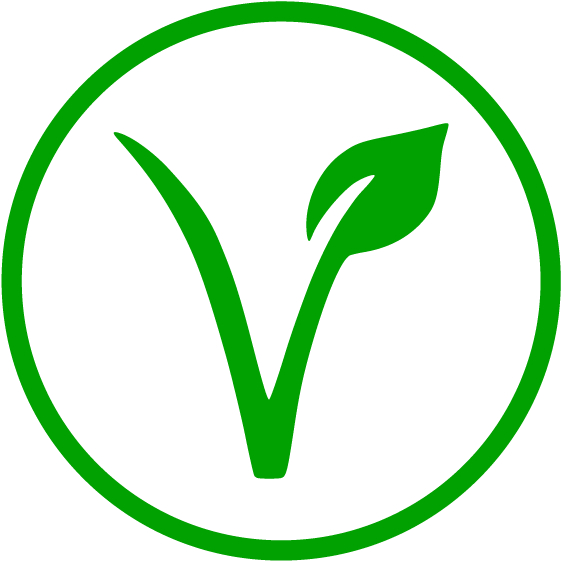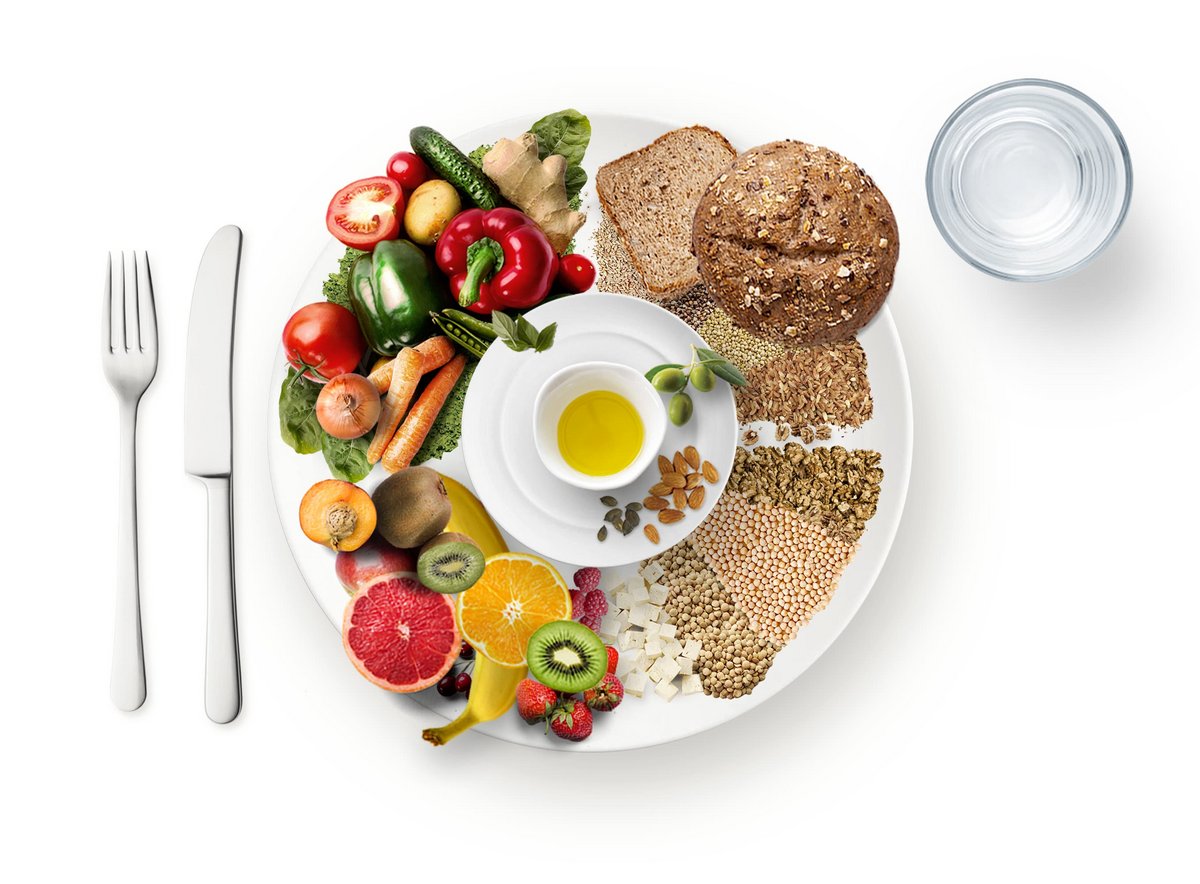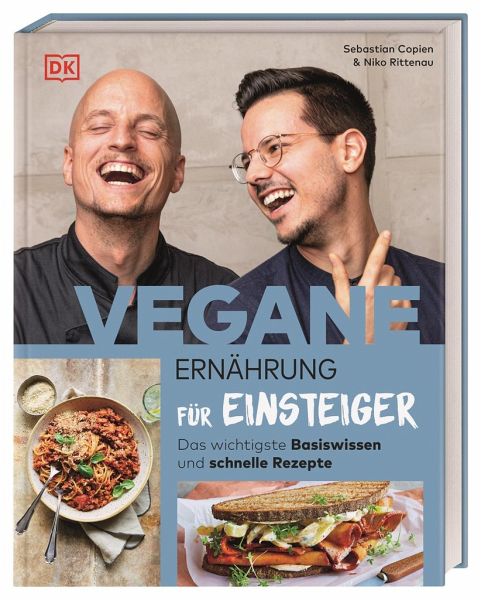Vegan diet and its clichés
You can find the recipes at the bottom :)
Introduction
A vegan diet excludes all products that are of animal origin. So not only fish and meat disappear from the menu, but also milk, eggs and all other products that come from animals or are derived from animals.
The vegan lifestyle also extends to other areas of life such as clothing, cosmetics or things of daily use.
To eat vegan or to live vegan is a decision that more and more people make for themselves. According to the Nutrition Report 2021 from the German Federal Ministry of Food and Agriculture (BMEL), around 10% of Germany's population now eat a vegetarian diet and 2% a vegan diet. That is about 1.7 million Veganer:innen alone in Germany. Veganism is not a fad of the 20th century either; already in ancient times there were groups that completely renounced the consumption of animal products and meat.
Reasons for a vegan diet:
Animal Welfare
Animals often live in cramped conditions in industrial factory farms, which are caused by the high consumption of animal products and meat and the cheap prices. The conditions in such stables for chickens, turkeys and pigs, for example, are not species-appropriate. There is a lack of exercise, fresh air, daylight and they are restricted in natural social interactions with their conspecifics. The animals are bred for high performance and are under high stress, which in turn affects their health. Not only the raising of the animals, but also their transport and slaughter is associated with a lot of agony. Moral arguments are also often used and criticize the treatment of animals, which denies them any right to a species-appropriate life.
Environmental and climate protection
A Vegane way of life causes less greenhouse gases and leaves more area for natural habitats. A study by the University of California and Stanford University simulated the effects of a plant-based lifestyle over the next 15 years. The effect would be equivalent to a 68 percent reduction in CO₂ emissions by the end of the century. This would be about half of the emission reduction required to limit global warming to two degrees Celsius above pre-industrial levels. This effect of a vegetarian diet is justified by the scientists with two processes: First, by not eating meat, fewer greenhouse gases that are particularly harmful to the climate, such as methane and nitrous oxide, would be emitted. This could dramatically improve atmospheric pollution within a few decades. On the other hand, the focus on plant-based foods would allow the natural ecosystems that are currently largely taken up by agriculture for the keeping of livestock to recover. Grazing lands could once again become forests and sequester CO₂.
Health aspects
A vegan diet can help prevent many diseases such as diabetes, cancer, and high blood pressure, and is often recommended against obesity. So switching to a vegan diet not only helps the environment, but also your health.
However, it is particularly important to eat a balanced diet, even with a plant-based diet.
Clichés about vegan nutrition - what's behind them?
1) The protein intake in a vegan diet is not sufficient.
- Proteins are important for building body tissue, but also fulfill a number of other important functionsFor the body, not the protein itself is important, but only certain amino acids (a total of 20, but 8 of which can not be formed by the body itself), but these are absorbed through food = one speaks of the protein requirement
- The essential amino acid lysine is found in legumes in high concentration and should therefore be consumed daily, this should be supplemented with whole grains and nuts and seeds, so you can easily reach your daily intake recommendation.
- Lysine is relevant for building muscle protein, some hormones and enzymes, as well as for wound healing and optimal calcium and iron metabolism in the organism.
- Considered separately, plant proteins have a lower biological value than animal proteins, although many of the measurement methods for protein evaluation have only a very limited significance due to their strong limitations.
- There is currently no consensus on whether vegans should actually consume more protein to compensate for the lower digestibility and availability of plant proteins.
- By combining different plant protein sources, the amino acid spectrum of plants can be greatly enhanced and is thus on a par with animal protein.
- Position papers such as that of the AND make it clear that athletes of any sport can meet their increased protein requirements purely from plants, and many successful vegan athletes also live this every day.
- A well-balanced vegan diet provides all essential amino acids with sufficient calories and can therefore cover the protein requirement.
- To be on the safe side, some institutions recommend a moderate increase in protein intake of about 10% in a purely vegan diet.
Excursus: Soy
Soy is a versatile legume that originates from East Asia and is cultivated worldwide. Soy is very important in a vegan diet because it is a good source of vegetable protein.
- Protein-rich: Soy contains all the essential amino acids that the body needs. It is therefore a complete source of protein.
- Nutrient Rich: Soy is rich in vitamins, minerals and fiber. It contains iron, calcium, magnesium and B vitamins, among others.
- Heart Health: Soy contains unsaturated fatty acids, which are good for the cardiovascular system. It can help lower cholesterol and reduce the risk of heart disease.
- Hormonal benefits: soy contains natural plant estrogens called isoflavones. These can relieve menopausal symptoms in women and reduce the risk of breast and prostate cancer.
- Weight control: Soy products are often low in fat and calories. They can help control weight and provide the body with important nutrients.
- Variety of uses: Soy can be enjoyed in various forms such as tofu, soymilk, tempeh, edamame and soy sauce. It can be used as a meat substitute in numerous recipes.
- Environmentally Friendly: Growing soy produces fewer greenhouse gas emissions and requires less land and water compared to animal products. Currently, much (80%) of the soy grown is crushed and used as animal feed. This feed soy is often imported from abroad, especially cultivation areas in South America are to be considered critically, since there was rain forest there in former times.
2) Veganer:in suffer from Vitamin B12 lack.
Animal products do not represent in principle a monopoly on individual nutrients. Vitamin B12 (Cobalamin) takes however a special role and is considered as critical nutrient with vegan nutrition. Not only vegans can develop B12 deficiency, but they have an increased risk.
Occurrence of vitamin B12
- Vitamin B12 is produced in the large intestine in animals as well as in humans, but can only be processed in the small intestine
B12 intake in animals:
- Carnivores can absorb vitamin B12 through meat.
- Herbivorous ruminants meet their B12 needs through self-production, so to speak.
- Herbivores without this ability probably absorb B12 through fecal residues in the soil, contaminated water, or other contaminants.
- Or through incidental consumption of animal B12 in, for example, insects on wild fruits.
- For humans, these are not acceptable alternatives to B12 intake via animal products and supplementation.
- Self-supply in humans not possible according to current knowledge Plants are not sufficient B12 suppliers according to current knowledge, but there are promising approaches.
B12 enrichment in plants
- However, it is possible to increase the B12 content in the soil in such a way that the B12 content of the plant also increases to a level that is sufficient for humans → associated with loss of the original preparation.
- Fertilizing plants in the field with cow dung containing B12 (also contains B12 in larger amounts, just like human dung) → not enough to meet daily needs.
- Fermented foods with B12-producing bacterial cultures.
- Microalgae require vitamin B12 for their metabolism and can accumulate it to relevant levels (e.g., the microalga Chlorella). However, these studies need to be confirmed and adapted to the market.
- Supplementation is so far the easiest and safest way to cover or support the daily B12 requirement (recommended not only for vegans).
3) If you are not a fish, you are missing omega-3 fatty acids.
- Omega-3 fatty acids fulfill important tasks in the human metabolism. They belong to the unsaturated fatty acids and are, for example, built into cell membranes.
- Humans are dependent on the supply of essential fatty acids, as they can only rarely be produced by the body itself.
- Omega-3 fatty acids do not originate from fish and the assumption that one can only cover one's omega-3 needs by eating fish is disproved.
- The actual source of omega-3 fatty acids is microalgae, which are eaten by zooplankton, which in turn are eaten by fish.
- Through the food chain, omega-3 fatty acids accumulate in the flesh of the fish.
- A valuable alternative to fish or fish oil is therefore microalgae oil.
- Plant foods that contain omega-3 fatty acids are, for example, chia, hemp or flax seeds, and walnuts.
4) You cannot meet your calcium needs without milk.
- Calcium is 99% stored in our bones and teeth and performs important tasks in the body. It contributes to bone health and affects the muscles and nervous system.
- Cow's milk is often considered the main source of calcium and a vegan diet is therefore associated with calcium deficiency.
- For optimal bone health, many factors play together. Calcium is important, but other minerals and vitamins, such as vitamin D, are also significant. In addition, sufficient physical activity has a positive effect.
- By a vegan nutrition the calcium need can be completely covered and that without food auxiliary means.
- Through, for example, calcium-rich plant foods, calcium-rich plant milk and calcium-rich mineral water.
- Calcium-rich plant foods include kale, arugula, nettles, broccoli, sesame seeds, chia seeds, flax seeds, almonds and hazelnuts.
- In plant milks labeled "with calcium," a calcium-rich red algae is added, making the plant drink an ideal source of calcium. In addition, tofu contains high levels of calcium depending on how it is made.
5) A vegan diet leads to iron deficiency.
A varied and whole-food vegan diet rich in whole grains, legumes, dark green leafy vegetables, and nuts and seeds allows for an adequate intake of iron if you get enough calories from these foods. Combining these foods with fruits and vegetables containing vitamin C and beta-carotene, as well as using onions and garlic with their sulfur-containing substances in cooking, provides additional iron-promoting factors. In this way, it is easy to achieve optimal iron intake.
Overview of measures to improve iron intake:
1. Intake of iron-rich foods: Legumes (lentils, beans, chickpeas), dark green leafy vegetables (spinach, kale), whole grains, nuts and seeds (pumpkin seeds, sesame seeds), dried fruits (apricots, raisins), and certain algae such as spirulina.
2. combine foods rich in vitamin C: Vitamin C enhances the absorption of plant iron. Therefore, it is helpful to combine iron-rich foods with vitamin C-rich foods such as citrus fruits, peppers, berries, broccoli or kiwi.
3. avoidance of inhibitors: Certain substances in foods can inhibit the absorption of iron. These include, for example, phytic acid (in whole grains and legumes), tannins (in tea and coffee), and calcium (in dairy products).Thus, it is recommended that these foods be consumed separately from iron-rich meals.
4. soaking, sprouting and fermenting: Soaking legumes and sprouting grains and seeds can increase the availability of iron, as this reduces natural inhibitors. Fermented foods such as sauerkraut can also improve iron absorption.
5. Regular checking of iron status: It is advisable to have one's iron status checked regularly to ensure that sufficient iron is being absorbed. If needed, supplementation can be done in consultation with a physician or nutritionist.
Nutritional options - diverse alternatives
Plant-based milk alternatives
- Almond milk: Made from ground almonds and water and has a mild, nutty flavor and is a popular option for peoplewith lactose intolerance or milk allergies
- Oat Milk: Made from soaked rolled oats and water and has a mild, slightly sweet taste and creamy consistency. It also contains fiber and is rich in nutrients
- Soy Milk: Made from soybeans and water and is a high protein alternative to cow's milk and has a creamy consistency. It is good for cooking, baking and for coffee
- Rice Milk: Made from ground rice and water and has a mild, sweet taste and is naturally lactose-free and cholesterol-free. It is thinner than some milk alternatives
- Coconut Milk: Made from the pressed pulp of the coconut and water and has a creamy flavor and is especially popular in exotic dishes. It is rich in healthy fats
- Cashew Milk: Made from soaked cashews and water and has a creamy taste and silky texture. It also contains healthy fats and is a good source of minerals like magnesium and iron
Cheese substitute
- Tofu: a plant-based source of protein that can be processed into a cheese-like texture
- Yeast flakes: a tangy, nutrient-rich additive that delivers a cheesy flavor
- Cashew cheese: made from soaked cashews, creamy and versatile in use
- Almond cheese: Made from ground almonds, mild in flavor and easy to spread
- Soy cheese: made from soybeans, can have a cheese-like texture and come in a variety of flavors
- Coconut oil-based cheese: Made from coconut oil, melts well and can be used as a processed cheese substitute
- Vegetable-based cheese alternatives: Made from carrots, potatoes or cauliflower, for example, to create a creamy texture
- Plant-based cheese brands: there are a variety of plant-based cheese brands on the market that offer a wide range of flavors and textures Egg substitutes
- Flax or chia seeds: 1 tablespoon of seeds mixed with 3 tablespoons of water makes a gel-like substance that can be used as an egg substitute in baking recipes
- Applesauce or mashed banana: these fruit purees can serve as binders and moisturizers in baked goods
- Silken tofu: pureed silken tofu can be used as a substitute for eggs in creamy desserts and quiches
- Yogurt: Vegetable yogurt can be used as a substitute for eggs in baked goods to add moisture and texture
- Baking soda and vinegar: A mixture of 1 teaspoon baking soda and 1 tablespoon vinegar can be used as an egg substitute in some recipes to provide looseness
- Aquafaba: The drained water from chickpeas or other legumes can be whipped and used as an egg whisk or foam substitute
- Commercial egg replacer products: There are also several commercial egg replacer products on the market specifically designed for use in baking recipes. They are often based on vegetable proteins or starches
Meat substitutes
- Tofu: Made from soybeans, it has a meat-like texture and can be used in many different dishes
- Tempeh: Fermented soybean block with a nutty flavor and firm texture that is good for frying, grilling or marinating
- Seitan: Made from wheat protein (gluten), it has a meat-like texture and can be fried, grilled or used as a filling in dishes
- Jackfruit: The unripe, young jackfruit has a fibrous texture and can be used as a meat substitute in dishes such as pulled pork or curry
- Legume-based products: Burgers, sausages or meatballs made from beans, lentils or chickpeas
- Mushrooms: portobello mushrooms or other meaty mushroom varieties can be grilled or fried for a meat-like texture and flavor
- Vegetable-based products: For example, vegetable burgers or vegetable patties made with a combination of vegetables, grains and spices to achieve a meat-like texture
- Commercial meat substitutes: There are a variety of plant-based commercial meat substitutes, such as vegan burgers, sausages, nuggets and more, available in many supermarkets
Recipes
- Brownies: https://byanjushka.com/vegane-brownies-1787/
- Puff pastries: https://www.tinesveganebackstube.de/herzhafte-blaetterteigtaschen/
- Cigköfte: https://www.healthyongreen.de/vegane-cig-koefte/
Book recommendation:
"Vegan Nutrition for Beginners. The most important basic knowledge and quick recipes." Sebastian Copien & Niko Rittenau (2021)



